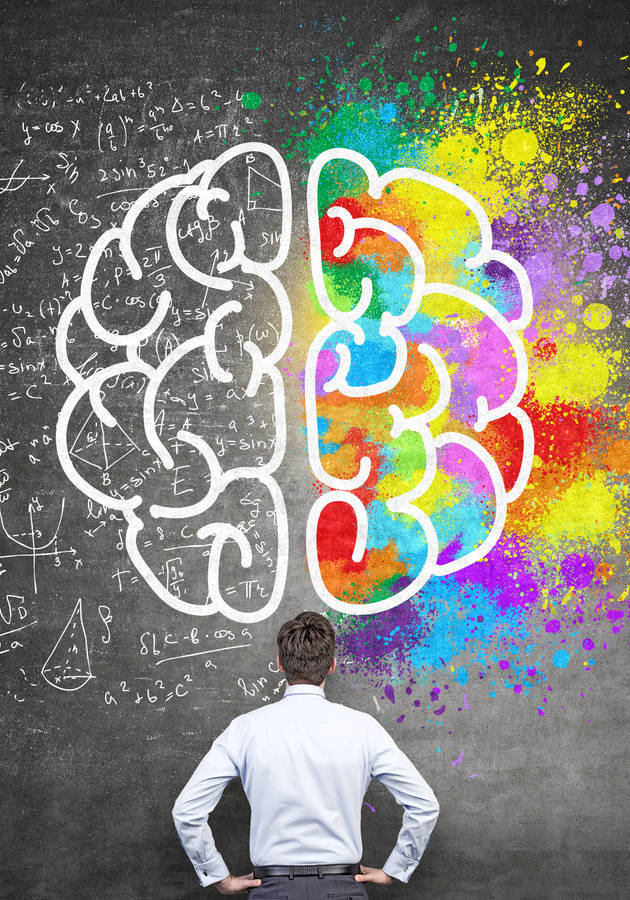Physics tries to make sense of the world around us. Through the discovery of principles such as gravity, pressure, and electromagnetism, the wonders of the natural world can be explained and new inventions become possible. Nowadays, physics is concerned with the smallest particles and the furthest galaxies. In “Fundamentals,” Nobel Laureate Frank Wilczek attempts to explain the fundamentals of physics. So get ready to learn how the world around you works!
Born again
Babies are like little scientists. When they first come into the world, they spend the first months and even years making sense of the world around them on a fundamental level. They have an unquenchable curiosity and conduct experiments from which they draw conclusions about how the world works.
For example, babies study their own hands, seeing how they move and eventually realizing that they can control them. They look at objects and people around them and eventually realize that they are not part of their mothers, but separate from them. As the author puts it, “Babies construct a world-model that accounts for what they experience within the bounds of their perception and environment.”
This is obviously the right way to go about it for practical purposes. But if you want to truly understand how the world works, down to a molecular level, you will have to unlearn some things that you taught yourself as a baby. In a way, you will have to be born again.
If you were to sit in a completely dark room with a friend, where the only source of light was dimmed by several layers of cloth, both of you would eventually only see intermittent flashes of light. The interesting thing is that you would not see the flashes at the same time. At this level, light has been divided up into quanta, and these cannot be shared. They depend on your perception of the world.
Furthermore, when looking at the very fundamentals of the natural world, it becomes obvious that “our body and our brain - the physical platform of our ‘self’ - is, against all intuition, built from the same stuff as ‘not-self,’ and appears to be continuous with it,” Wilczek writes. So the artificial distinction learned as a baby, between “self” and “not-self” is fundamentally wrong.
Let’s look at some fundamental principles of physics to see what else there is to learn and unlearn.
Plenty of space and time
The universe, both within and without, holds much more space than you would think possible. The basic structural units of matter are atoms and molecules. Measuring the human body in terms of its atoms, it is the size of 10 octillion atoms. To put that to scale, on a moonless night, you could probably see about a few thousand stars in the sky. The number of atoms within each of us, 10 octillion, is 10 times the number of stars in the entire visible universe. Each of us, quite literally, carry a universe within ourselves.
When astronomers surveyed the universe around planet Earth, they made some important discoveries. First, that the entire universe is made up of the same material, and that the same laws apply everywhere. They also realized that matter is organized into a structural hierarchy; stars cluster into galaxies, which are usually made from several million to billions of stars. The final finding was that all of the components of the universe are sprinkled uniformly throughout space.
One of the most exciting discoveries was made by Edwin Hubble, who realized “that the patterns of starlight that distant galaxies emit - their spectra - are shifted toward longer wavelengths, compared with the light patterns of closer galaxies,” Wilczek writes. This is called a redshift. Wavelengths become longer when an object is moving away from us, so the redshift that Hubble discovered meant that the furthest galaxies were moving away from us in speeds proportional to their distance.
If you were to reverse that movement, you would have galaxies moving toward us at increasingly fast speeds, until everything came together in one place. This means that the universe was once packed together much more tightly than it is now. Then we’ve got the big bang. With Hubble’s discovery, it was also possible to calculate how old the universe really is: 13.8 billion years.
When we look toward the cosmic horizon, we are looking back in time. That is because light travels at a finite speed, so the light that reaches us now was emitted long ago. We can see all the way back to the big bang, but what happened before that, we do not know. The big bang emitted too much light for us to see past it.
With time, it is similar as with space: there is more of it than you think. At 13.8 billion years old, the cosmic age is hundreds of millions of human lifetimes. But a human lifetime itself is incredibly long, if you measure it in thoughts: As the author writes, “A full human lifetime contains far more moments of consciousness than universal history contains human lifespans.”
Fundamental laws
There are only a few laws that you need to know in order to understand the world around you. Fundamental physical laws are quite different from human laws: they apply everywhere and always, and they always describe what will happen. Since they are expressed as mathematical equations with precisely defined quantities, there is no room for ambiguity or disagreement.
Arguably, one of the most important fundamental laws is Newton’s law of gravity. The author summarizes this law as such: “Bodies attract one another with a force that is proportional to the product of their masses and decreases as the square of the distance between them.” This law worked well until people started to grapple with electricity and magnetism.
Faraday observed that there existed both electric and magnetic fields; electrically or magnetically active areas would extend influence throughout space. He also introduced the law of induction, meaning that changing magnetic fields would produce circulating electric fields. This discovery was complemented by James Clerk Maxwell, who saw that the same held true when the roles of magnetic and electric fields were reversed.
Maxwell also recognized that the electromagnetic disturbances created by these fields must be some form of light, and thereby paved the way for the discovery of new forms of radiation that are invisible to the human eye, such as infrared radiation, microwaves, or radio waves.
Quantum theory
Light, therefore, seems to be both particle and field. And this is where quantum theory comes in - or more precisely, quantum fields. They are the quantum versions of electromagnetic fields, and follow the same rules as well as some additional ones, the so-called “quantum conditions.” Quantum fields produce particles, and they explain why particles such as electrons, photons, or atoms, exist as identical copies.
For humans, it was a great advancement to be able to create identical copies of something with the help of machines. But even then, wear and tear will eventually cause these objects to lose similarity. But, as the author writes, “The light of a given color is the same thing - it has the same properties and interacts with matter in the same way - whatever its source.” This sameness can only be explained by all these particles existing in the same quantum field, causing them to be exactly the same.
When looking at the fundamental laws, one should also look at complementarity. Wilczek describes complementarity as “the concept that one single thing, when considered from different perspectives, can seem to have very different or even contradictory properties.”
To clarify what this means, think about music as an example. You can analyze music in two ways: by looking at harmony or by looking at melody. In quantum physics there is a similar phenomenon. A particle’s basic description is its wavelength. If you want to predict where the particle will be, you can process the wavelength in one way. If you want to predict how fast it is moving, you’ll have to process the wavelength in a different way. It is impossible to do both at the same time.
This might be difficult to understand, since for large collections of particles, say, gas in a hot air balloon, it is perfectly possible to do both at the same time by using concepts such as density, pressure, or temperature. While at an atomic level, it is possible to gain much more information on the properties of gas, this level is useless if all you want to do is to fly a balloon. We need complementary descriptions to interact with the world.
Mysteries Remain
While our physical understanding of the world and the universe has increased by leaps and bounds, there are many more mysteries to be uncovered and explained. In particular, there are three big questions that have so far remained unanswered:
- What caused the big bang, and can it happen again?
- Do fundamental particles and forces follow any meaningful patterns?
- Does mind emerge from matter, and, if so, how?
These are tantalizing questions, for sure, and even more so since we are a long way from answering them. There are, however, two topics closer to being resolved that are no less fascinating: that of time reversal symmetry and that of dark energy and matter.
Time reversal symmetry (T) describes the fact that the fundamental laws of physics stay the same, whether they are applied to the past, present, or future. This does not even remotely align with our human experience of the past and future. If you were to run a film backward, for example, none of the events would make sense – you would never confuse this with something that could happen in reality. This is one of the questions physics, as of yet, still has to answer: why does T exist for the fundamental laws, but not for the world we experience?
Dark energy and matter is another fascinating field of research. It was discovered when astronomers discovered gravitational forces without an apparent cause. The only way they could be explained was through the existence of an unknown, invisible entity: dark matter.
One of Kepler’s laws states that the speed of the rotation around an orbit is proportional to the mass inside. Astronomers observed that gas clouds and stars rotated around faraway galaxies at speeds that could not be explained by the number of stars and other matter within the galaxies. That led astronomers to believe that places where not much light was emitted also consisted of matter. This led scientists to believe that the universe is made up of at least 25% dark matter. The kind of matter we understand makes up only about 4% of the universe.
But what exactly is dark matter? It is probably made up of a particle that feebly interacts with others and with itself. Wilczek discovered such a particle, the axion, which could be the key to understanding the properties and function of dark matter in the universe.
Final Notes
While physics has explained the fundamentals of how the world works through principles such as gravity, velocity, or electromagnetism, many more phenomena remain to be explored. Quantum physics has simultaneously enlarged and complicated the understanding of the world and the universe. We can look all the way back to the time of the big bang, but what caused it or what happened before is still unknown. Dark matter and energy is another field that leaves a lot to be explored: what does it consist of, and what is its function?
12min Tip
Think of other examples of complementarity in life. Maybe the behavior of populations in contrast to the behavior of individuals could be an example?





























